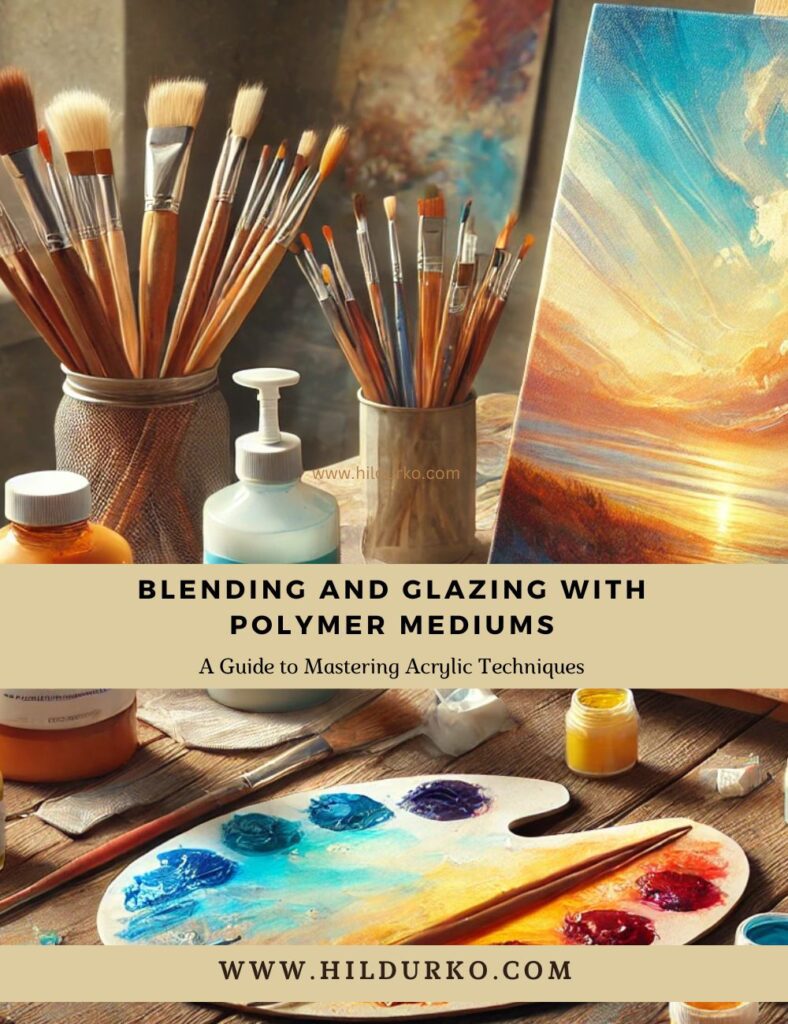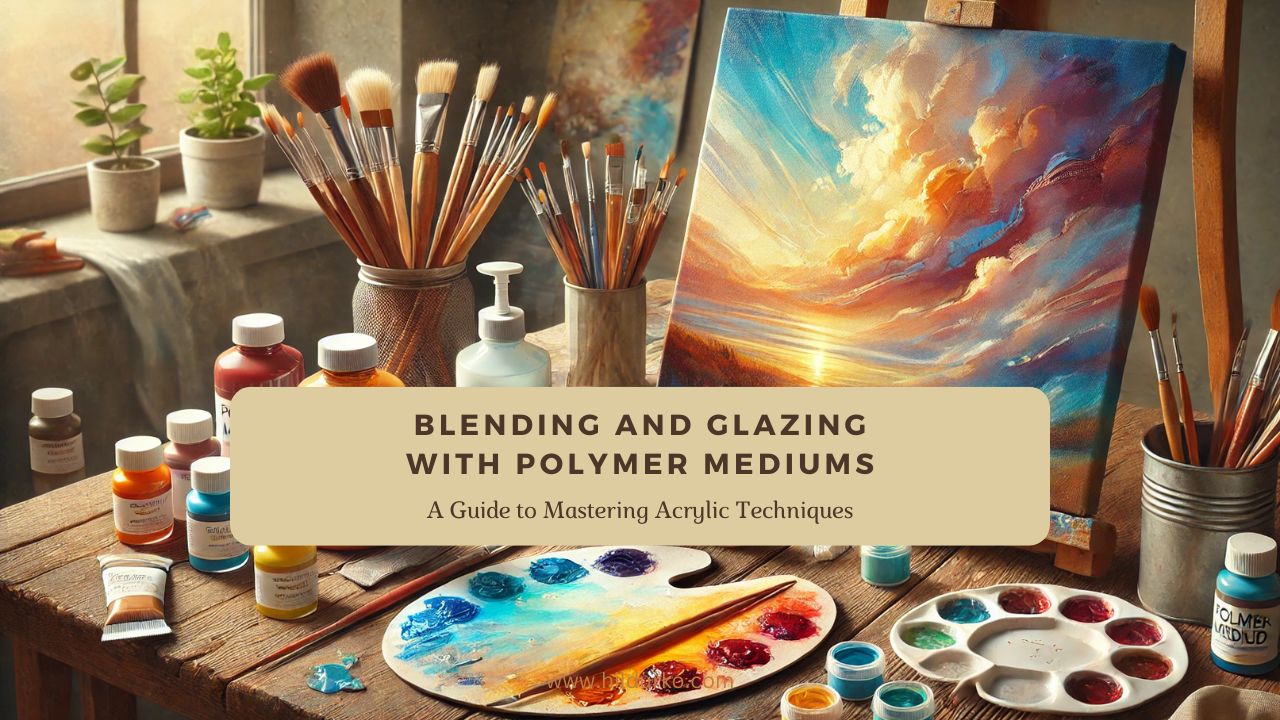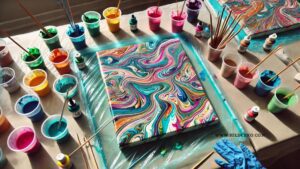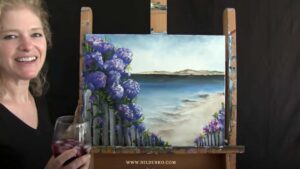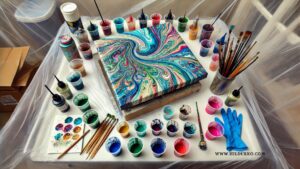A Guide to Mastering Acrylic Techniques
Blending and glazing are two essential techniques in the world of acrylic painting, especially for artists who are striving to take their skills to the next level. These techniques can add depth, luminosity, and smooth transitions to your artwork, bringing it to life with a professional touch. However, mastering these methods can be challenging due to the fast-drying nature of acrylics. This is where polymer mediums come into play. In this tutorial, we’ll delve into how to use polymer mediums to extend the open time of your acrylic paints, allowing you to blend and glaze with greater ease and precision.
Understanding Polymer Mediums
Before diving into the techniques, it’s important to understand what polymer mediums are and how they work. Polymer mediums are acrylic-based products that can be mixed with acrylic paints to alter their properties without compromising color intensity or adhesion. There are various types of polymer mediums available, such as gloss, matte, and satin, each offering different finishes. For blending and glazing, gloss or satin mediums are often preferred due to their smooth texture and ability to create a transparent layer.
One of the key advantages of using a polymer medium is its ability to extend the open time of acrylic paints. Open time refers to the period during which the paint remains workable on the canvas. Acrylics typically dry quickly, which can make blending difficult. By mixing your paints with a polymer medium, you slow down the drying process, giving you more time to work on seamless transitions between colors.
Mastering Blending with Polymer Mediums
Blending is the technique of smoothly transitioning from one color to another on the canvas. It is crucial for creating gradients, shadows, and realistic textures. Here’s how to use polymer mediums to achieve a perfect blend:
- Prepare Your Palette: Squeeze out the colors you intend to use onto your palette. Alongside your paints, pour out a small amount of polymer medium. Start with a ratio of one part medium to two parts paint and adjust as needed.
- Mix Your Paints: Use a palette knife or brush to thoroughly mix the paint with the medium. The medium should not significantly alter the color but will give the paint a more fluid consistency and extend its drying time.
- Apply the Paint: Begin by applying the first color to your canvas. Work quickly, as the open time, while extended, is not indefinite.
- Blend with the Second Color: While the first color is still wet, apply the second color adjacent to it. Using a clean, dry brush, gently work the two colors together where they meet. The polymer medium will help the colors to merge smoothly without hard edges.
- Fine-Tuning: If necessary, dip your brush in a small amount of polymer medium and lightly brush over the blended area to further soften the transition.
Glazing with Polymer Mediums
Glazing is another powerful technique that involves applying thin, transparent layers of color over a dry base layer to build depth and richness. This technique is particularly useful for creating luminous effects, such as the glow of skin tones or the shimmer of light on water.
- Choose Your Colors and Medium: Select the color you want to glaze with and mix it with a polymer medium in a ratio of about one part paint to three parts medium. The goal is to create a translucent mixture that will tint, rather than cover, the underlying layers.
- Test Your Glaze: Before applying the glaze to your artwork, test it on a scrap piece of canvas or paper. Adjust the ratio of paint to medium if the glaze is too opaque or too transparent.
- Apply the Glaze: Using a soft brush, apply the glaze in thin, even strokes over the area you want to enhance. Because the paint is diluted with the medium, it will dry more slowly, allowing you to adjust the coverage and remove any excess if needed.
- Layering: Glazing is a process that benefits from layering. Allow each layer to dry completely before applying the next. Multiple layers will build up the color intensity and create a more complex and vibrant final effect.
Tips for Success
- Practice Patience: Blending and glazing are techniques that require patience and practice. Don’t rush the process—take your time to observe how the colors interact and adjust your approach as needed.
- Experiment with Ratios: The exact ratio of paint to medium can vary depending on the effect you want to achieve. Don’t be afraid to experiment to find the perfect balance for your style.
- Keep Your Brushes Clean: Clean brushes are essential for smooth blending. Keep a cloth or paper towel handy to wipe your brush between strokes to avoid muddying your colors.
- Use Quality Materials: High-quality polymer mediums and paints will yield better results. Investing in good materials can make a significant difference in the ease and outcome of your blending and glazing efforts.
Conclusion
Blending and glazing with polymer mediums can significantly elevate your acrylic painting, allowing you to create smooth transitions, rich colors, and dynamic effects. While these techniques may seem daunting at first, with practice and the right materials, they can become powerful tools in your artistic repertoire. Whether you’re looking to add subtle nuances or bold, dramatic changes to your work, mastering blending and glazing with polymer mediums is a step toward achieving professional-level artistry.
If you enjoy the videos mentioned in this post, we encourage you to visit the creators’ channels and give them a like. Your support helps them continue to produce high-quality content and share their creative ideas with the community. By liking and subscribing to their channels, you not only show your appreciation but also stay updated with their latest projects and tips.
Happy painting
LIKE THIS POST?
Share the link on your social media
or pin the image below to your Pinterest board!

